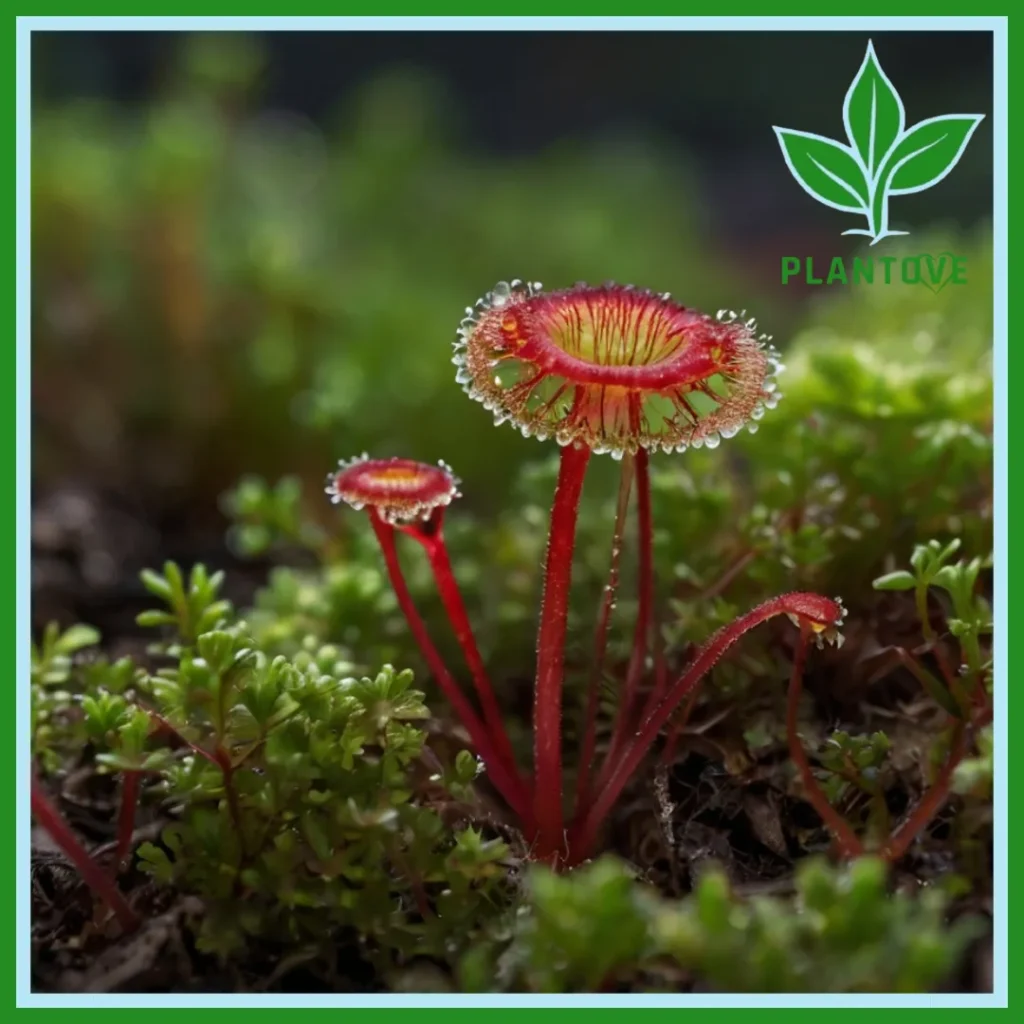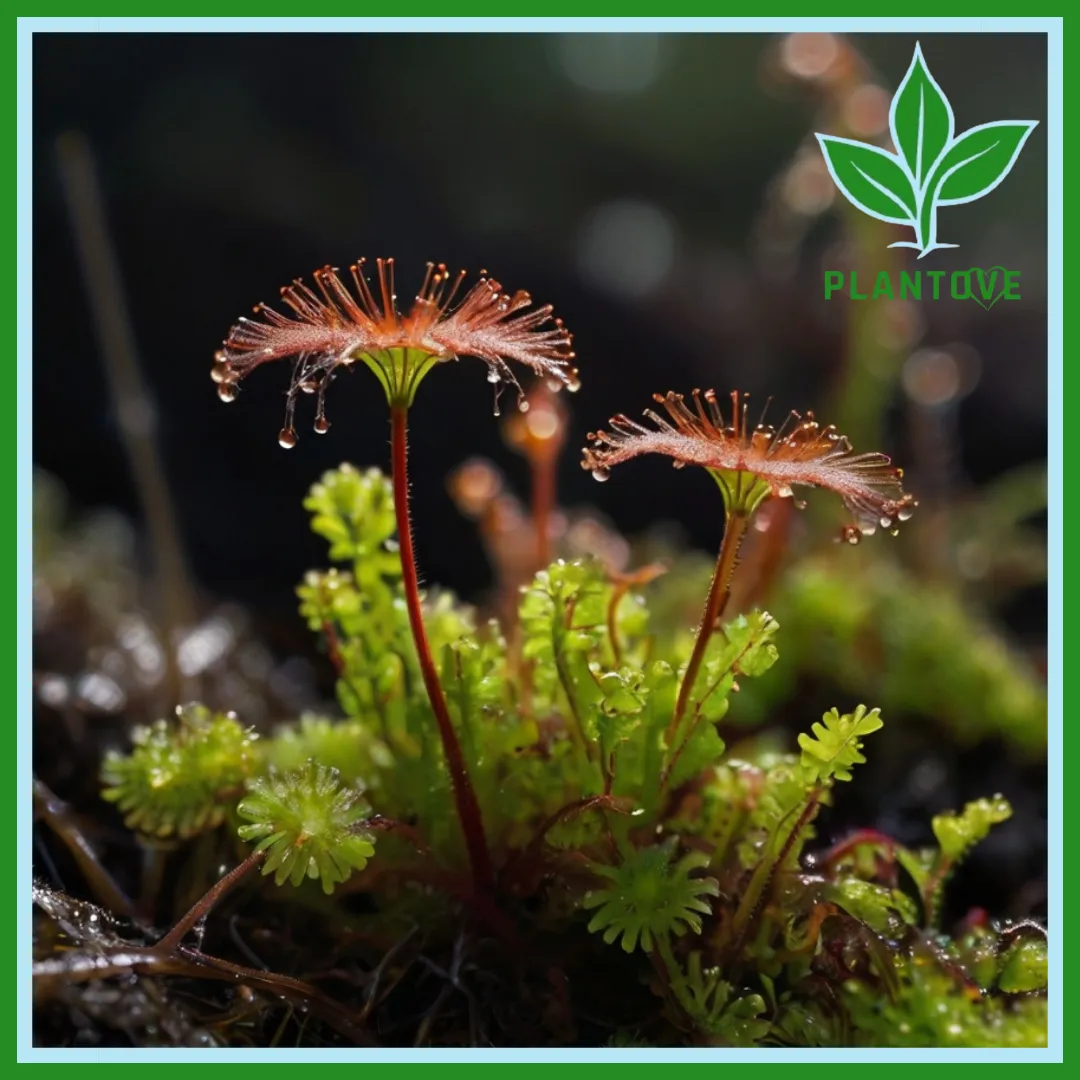The sundew plant is one of the most captivating and unique carnivorous plants in the world. With its dazzling appearance and remarkable ability to trap and digest insects, the sundew plant, or Drosera, attracts attention from both plant enthusiasts and curious observers. This guide will cover everything you need to know about the sundew plant, including how to care for it, its unique characteristics, and why it makes a fascinating addition to any plant collection.
What is a Sundew Plant?
The sundew plant, scientifically known as Drosera, belongs to a large genus of carnivorous plants found across many continents. The plant derives its name from the shimmering, dew-like droplets on its leaves that glisten in the sunlight. These droplets are sticky mucilage, designed to attract and trap insects, which the plant uses as a nutrient source. Carnivorous plants like the sundew thrive in nutrient-poor environments, such as bogs and marshes, making their unique feeding mechanisms essential for survival.
There are over 90 different species of sundew plants, each exhibiting different sizes, shapes, and habitats. They range from small, ground-hugging varieties to towering plants that can reach several feet in height.
How Does the Sundew Plant Trap Insects?
The sundew plant captures its prey using specialized leaves covered in tiny, glandular hairs. These hairs secrete a sweet-smelling, sticky substance that mimics nectar, attracting insects like flies and ants. Once an insect touches the leaf, it becomes ensnared by the sticky mucilage. As the insect struggles, it becomes further entangled, triggering the sundew’s hairs to curl around the prey. This curling motion is crucial because it allows the plant to envelop the insect and increase contact with digestive enzymes.
Once the insect is fully trapped, the sundew plant releases enzymes that slowly break down the prey’s soft tissues, extracting essential nutrients such as nitrogen and phosphorus. These nutrients are absorbed by the plant, providing it with the sustenance it needs to thrive in environments with poor soil quality.
Sundew Plant Care: How to Keep It Healthy

The sundew plant may look exotic, but caring for it is relatively simple, especially when you mimic its natural habitat. Below are essential tips for sundew plant care, ensuring that your plant thrives and remains healthy.
1. Light Requirements
Like most carnivorous plants, the sundew plant thrives in bright, direct sunlight. Ideally, it should receive 4 to 6 hours of sunlight per day. If you are growing the plant indoors, placing it on a sunny windowsill or under a grow light will help it flourish. Keep in mind that different species of sundew plants may have slightly varying light requirements.
Tip: If you notice your sundew plant’s leaves becoming weak or losing their vibrant color, it may not be getting enough light.
2. Watering
Watering is a critical aspect of sundew plant care. These plants prefer consistently moist soil, similar to the boggy environments in which they naturally grow. However, they are sensitive to the chemicals found in tap water, such as chlorine and fluoride. To avoid damaging the plant, use distilled or rainwater for watering.
The soil should remain damp but not waterlogged. You can achieve this by placing the plant in a tray with about an inch of water, allowing it to absorb moisture from the bottom. Never let the soil dry out, as this can cause the plant to weaken and die.
3. Humidity and Temperature
Being a plant native to wet, humid environments, the sundew plant thrives in high humidity levels of around 50-70%. You can maintain this humidity by misting the plant or using a humidity tray. Alternatively, placing the plant in a terrarium can help replicate the humid conditions it loves.
Temperature-wise, the sundew plant prefers a range between 60°F and 85°F (15°C to 29°C). It’s important to keep the plant away from cold drafts or extreme heat sources, as drastic temperature changes can stress the plant.
4. Soil
The sundew plant thrives in nutrient-poor soil that mimics its natural boggy habitat. A mixture of sphagnum moss and perlite or silica sand works best, as this allows for good drainage while retaining enough moisture. Avoid using standard potting soil or soil containing fertilizers, as these can harm the plant.
5. Feeding
While the sundew plant is capable of capturing its food, you can occasionally feed it small insects like ants, fruit flies, or gnats to supplement its diet. Avoid feeding it large insects, as they can rot on the plant and cause damage. If your sundew plant is grown outdoors, it will likely catch enough insects on its own, making additional feeding unnecessary.
Note: Never feed your sundew plant human food such as meat or bread, as this can harm the plant.
Sundew Plant Propagation
Propagating a sundew plant is a rewarding way to expand your collection or share these fascinating plants with others. There are several methods for propagating sundew plants, including leaf cuttings, seed germination, and root division.
1. Propagating by Leaf Cuttings
One of the most common methods for sundew plant propagation is through leaf cuttings. To do this, gently remove a healthy leaf from the plant, ensuring that it includes a small portion of the stem. Place the leaf on moist sphagnum moss or a similar medium and cover it with plastic to create a humid environment. Keep the cutting in a bright location with indirect sunlight, and within a few weeks, you should see new growth sprouting from the leaf.
2. Propagating by Seed Germination
Sundew plants produce small, delicate seeds that can be germinated to grow new plants. The seeds should be sown on the surface of moist, nutrient-poor soil, and kept in a humid environment. It’s important to expose the seeds to bright, indirect light, and maintain consistent moisture levels. Sundew seeds can take several weeks to germinate, so patience is key.
3. Propagating by Root Division
Mature sundew plants can be divided at the roots to propagate new plants. Carefully remove the plant from its pot, and gently separate the roots, ensuring that each division has a healthy section of both roots and leaves. Plant each division in its own pot with the appropriate soil mix, and water thoroughly.
Types of Sundew Plants
As mentioned earlier, there are over 90 species of sundew plants, each with unique features and adaptations. Some of the most popular and well-known types of sundew plants include:
- Cape Sundew (Drosera capensis): One of the most common and easiest sundew species to care for. It has long, narrow leaves covered in sticky hairs.
- Rosetted Sundew (Drosera spatulata): This species forms a small rosette of leaves and is ideal for those with limited space.
- Fork-leaved Sundew (Drosera binata): Recognized for its unique, forked leaves, this species is highly effective at catching larger insects.
- Pygmy Sundew (Drosera pygmaea): As one of the smallest sundew species, it is perfect for growing in small terrariums or containers.
Why the Sundew Plant is a Unique Addition to Your Collection
The sundew plant is not only visually striking but also incredibly efficient at surviving in challenging environments. Its carnivorous nature and ability to catch and digest insects make it an intriguing plant to care for, and it can serve as a conversation starter in any collection.
Adding a sundew plant to your home or garden also helps control insect populations. Its ability to catch pesky flies and mosquitoes can provide a natural, eco-friendly way to manage these pests.
Moreover, the sundew’s resilience in nutrient-poor environments demonstrates its remarkable adaptability. It teaches us that even in the most inhospitable conditions, nature finds a way to thrive.
Conclusion
The sundew plant is a one of a kind species that captivates with its carnivorous capabilities and dazzling appearance. By understanding the key aspects of sundew plant care, including proper lighting, watering, and feeding, you can help this fascinating plant thrive in your home or garden. Propagating your sundew can be a rewarding experience, allowing you to share this unique plant with others or expand your own collection. With the right care, your sundew plant will grow into a healthy, insect-catching wonder that brings a touch of the wild into your living space.

